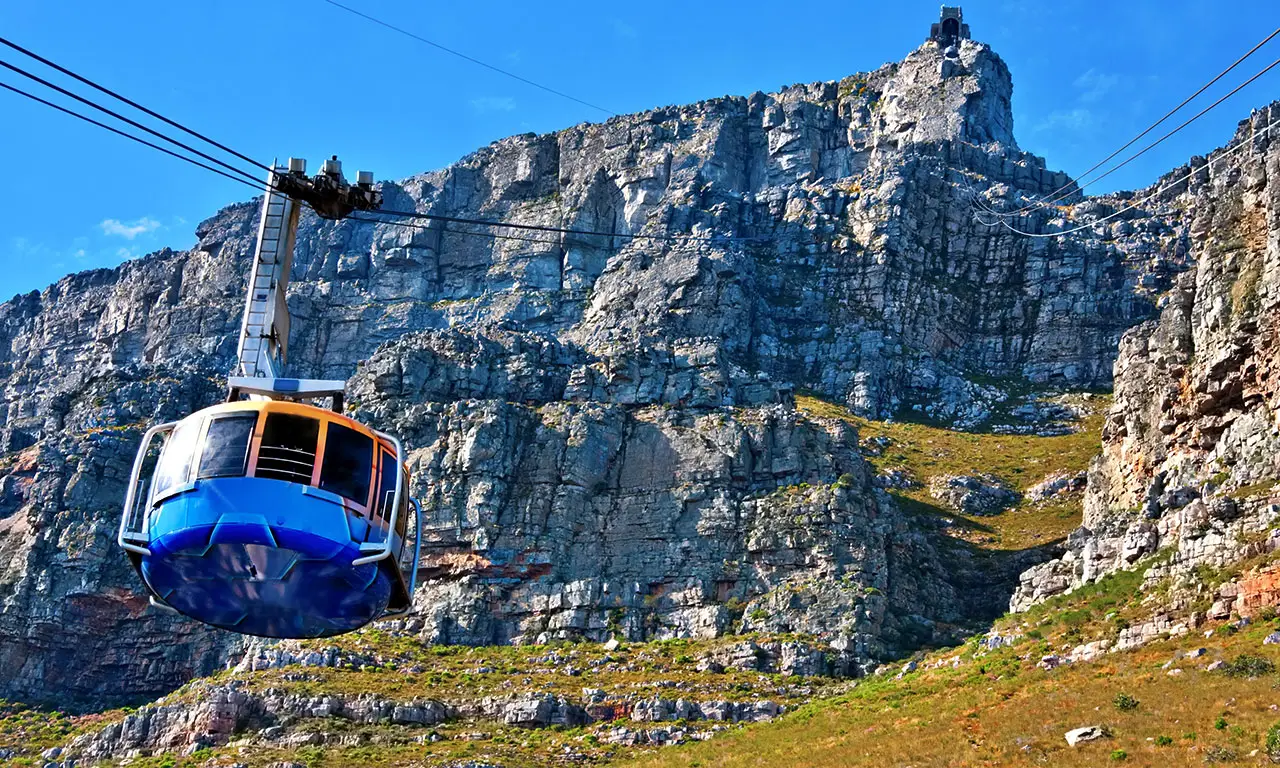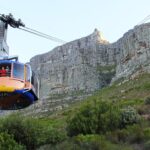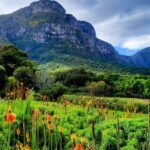Table Mountain, standing proudly above Cape Town, is a living reminder of both natural splendor and a deep, varied history. But, have you ever wondered who named this prominent attraction in Cape Town?
Admiral Antonio de Saldanha, a Portuguese navigator, was the first known European to climb and name Table Mountain in 1503. He called it Taboa da caba, meaning ‘table of the cape’ due to its table-like top. The name was later Dutchified to Tafelberg and eventually anglicized to Table Mountain. Before that, the indigenous Khoi and San peoples knew it as Hoerikwaggo, ‘Mountain in the Sea’.
With that said, please read on as I dive into the story of how this iconic landmark was named and the significance it holds. From its beginnings as Hoerikwaggo, respected by the indigenous Khoi and San people, to its recognition by European explorers like Admiral Antonio de Saldanha, who climbed its heights and gave it a name that stuck.
We’ll look at the clash of cultures when the Dutch colonized the land, forever changing the landscape and the lives of its original inhabitants.
Fast forward to modern times, we will explore how this majestic mountain draws millions through its cable car rides, and remains a symbol of beauty and resilience.
Join me as I uncover the layers of history, culture, and nature that make Table Mountain much more than just a peak—it’s a cornerstone of Cape Town’s identity.
Key Takeaways
- Table Mountain’s original name, Hoerikwaggo, given by the indigenous Khoi and San peoples, reflects its long-standing importance before European contact.
- Admiral Antonio de Saldanha was the first European to record a name for Table Mountain, calling it Taboa da caba.
- The arrival of the Dutch, led by Jan van Riebeeck, marked a significant cultural and political change for the local people and the landscape.
- The development of modern amenities like the cable car has made Table Mountain more accessible to millions of visitors.
The Naming of Table Mountain
The mountain’s modern name has its roots in the age of exploration.
European explorers, marveling at the flat-topped mountain as they sailed around the Cape of Good Hope, brought their own names and stories to it.
It was Admiral Antonio de Saldanha, a Portuguese navigator, who first climbed the mountain in 1503 and named it Taboa da caba. This name emphasizes the table-like feature of the mountain which later evolved into Tafelberg when the Dutch arrived and, in English, became Table Mountain.
These explorations marked the beginning of the mountain’s global recognition, a name that has withstood the test of time and remains iconic to this day. Through this, we see how different cultures have left their mark on the mountain, layer by layer, shaping its story into what we know now.
Indigenous Significance of Table Mountain
Table Mountain has been a central part of the local landscape long before it was named by European explorers.
For the indigenous Khoi and San peoples, the mountain was known as Hoerikwaggo, meaning “Mountain in the Sea.” They held the mountain in high regard, considering it sacred.
In their beliefs, their god, Tsui or Goab, resided on this majestic mountain. The presence of hand axes found in areas like Kirstenbosch Garden shows that humans have lived nearby for over 30,000 years.
This connection highlights the profound spiritual and cultural bond between the original inhabitants and the mountain, which was much more than just a natural feature; it played an integral part in their identity and spirituality.
Cultural Collision and Transformation
The arrival of Jan van Riebeeck and the Dutch in 1652 signaled a major transformation for Table Mountain and the people who lived in its shadow.
The Dutch colonized the Cape, claiming the land from the Khoi and San people, leading to profound changes in the area’s social and physical landscape. Cape Town was quickly established, and with it came the construction of buildings and the introduction of slaves.
This period of colonization had a lasting impact on the region, altering the course of its history dramatically.
Through it all, Table Mountain stood tall, silently witnessing the cultural collision and the emergence of a new society, one that included a mix of indigenous cultures and European settlers, each with their own relationship to this monumental landmark.
Modern Access and Tourism

Today, visiting Table Mountain is easier than ever. The introduction of the cable car in 1929 revolutionized the way people could experience the mountain.
With renovations and reopening in 1997, the cable car has since transported over 22 million visitors to the summit, offering breathtaking views of Cape Town and the surrounding ocean.
Table Mountain isn’t just a hit with tourists; it’s also been recognized for its natural importance, gaining status as a natural park in 1998.
In 2004, the larger region, known as the Cape Floral Region, was declared a UNESCO World Heritage Site due to its unique biodiversity. Through these developments, Table Mountain has secured its place not only as a key tourist destination but also as an internationally acknowledged natural wonder.
Its significance today lies in both its unparalleled beauty and its role in promoting conservation and understanding of the region’s unique plant life and ecosystems.
Conclusion
In this exploration of Table Mountain, we’ve uncovered layers of its history, from its sacred beginnings as Hoerikwaggo, to a marker of European exploration, and the site of cultural transformation.
We’ve seen its name change hands, and its slopes bear witness to the enduring resilience of the Khoi and San people.
Its flat summit, once a navigation beacon for seafarers, is now a popular spot easily reached by cable car, inviting millions to enjoy its stunning views. Table Mountain stands not just as a geographical feature but as a cultural and natural emblem of Cape Town.
Whether shrouded in clouds or basking in the African sun, it remains an everlasting symbol of the city’s rich heritage, a testament to the history etched into its granite face, and a beacon of natural splendor that continues to draw people from all corners of the globe.
Frequently Asked Questions
Who first named Table Mountain?
Admiral Antonio de Saldanha, a Portuguese navigator, was the first known European to climb and name Table Mountain in 1503. He called it Taboa da caba, meaning ‘table of the cape’ due to its table-like top. The name was later Dutchified to Tafelberg and eventually anglicized to Table Mountain. Before that, the indigenous Khoi and San peoples knew it as Hoerikwaggo, ‘Mountain in the Sea’.
How did Table Mountain get its flat top?
Table Mountain’s flat top was formed around 300 million years ago. It’s mainly composed of sandstone that was resistant to erosion, which stood firm while softer rock around it was worn away over time. The mountain’s distinctive flat top is a result of these ancient erosional processes, creating its unique plateau.
Why is Table Mountain important?
Table Mountain is important for many reasons. Culturally, it was sacred to the indigenous Khoi and San people. Historically, it served as a significant navigational landmark for European explorers. In modern times, it’s a major tourist attraction and a symbol of Cape Town. Also, environmentally, it is part of the Cape Floral Region, a UNESCO World Heritage Site, home to thousands of plant species, many of which are endemic and cannot be found anywhere else in the world.
Can you visit Table Mountain?
Yes, you can visit Table Mountain. Many people hike up the trails, with different paths offering various difficulty levels. For those looking for a less strenuous way to the top, the Table Mountain Aerial Cableway provides a quick and scenic ride to the summit. Once up there, visitors can enjoy breathtaking views, have a bite at the café, or explore the many walking trails.







